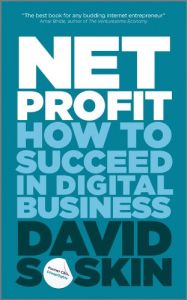Join getAbstract to access the summary!

Join getAbstract to access the summary!
David Soskin
Net Profit
How to Succeed in Digital Business
Wiley, 2010
What's inside?
Entrepreneurs seeking real-world e-business advice should log on to this useful primer.
Recommendation
David Soskin’s primer about how to start and run a digital business is comprehensive, which is both his book’s strength and its weakness. At times, the book becomes a choppy laundry list of do’s and don’ts, but Soskin’s citation of case studies of Internet successes and failures, and his tales of running the UK online company Cheapflights Media, will hold your interest. Soskin, a web entrepreneur, begins with the birth of the Internet. He explains various business models, marketing platforms and best business practices. He looks at the digital industry around the globe and provides a glimpse into its future. This is a worthy introduction for the online entrepreneur and an excellent update for the seasoned professional. getAbstract suggests that wannabe online moguls read this overview and then supplement it with texts covering each topic in depth.
Summary
About the Author
David Soskin is the former CEO of Cheapflights Media and current chairman of mySupermarket.co.uk and Swapit.co.uk.


















Comment on this summary